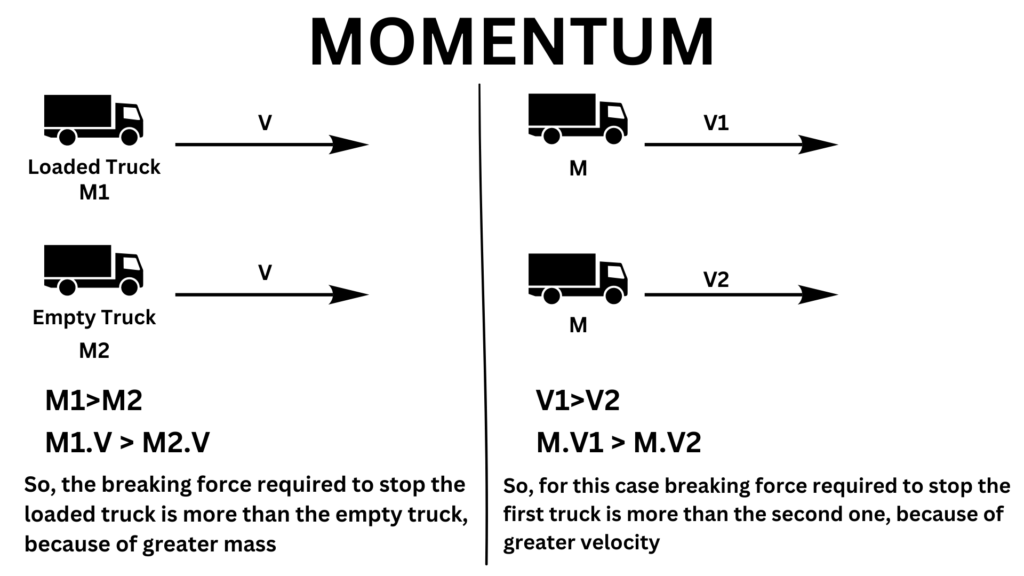INTRODUCTION TO NEWTON'S LAW OF MOTION
Sir Isaac Newton’s book ‘Philosophiae Naturalis Principia Mathematica’ laid the groundwork for what is now known as classical mechanics. Essentially, Newton’s Law of Motion explain the nature of the interactions between the forces acting on a body and its motion. In a nutshell, his laws provide a practical grasp of how physical objects move. When using Newton’s Law of Motion, keep in mind that they only explain the motion of a body as a whole and apply to motions relative to a specific frame of reference. The three Laws of Motion listed below have been modernized, however they are based on Newton’s original forms.

WHAT IS FORCE
Everyone has a basic idea of force from everyday experience. Let’s say a table is to be moved from one room to another. The implement to do this is the ball. Similarly, mechanical force is exerted by muscles when throwing a ball or running. Again, the Earth exerts a gravitational force on an object.
Only force can change the velocity of an object i.e. acceleration. However, when multiple forces act on an object simultaneously, it may not cause a change in velocity. If the resultant force or net force of these multiple forces is zero, then there is no change in the velocity of the object. For example, a stone that is too heavy cannot be moved by a man. Net force is sometimes referred to as gross force or unbalanced or unequal force.

WHAT IS MOMENTUM
Definition: The combination of mass and velocity, the momentum created in a moving object is called the momentum of that object.
Newton described momentum as ‘quantity of motion’. The momentum of an object is equal to the product of its mass and velocity. That is, if an object has mass m and velocity v, then momentum of the object = m x v. Note here that the momentum of an object depends on both its mass and velocity. Since mass is a scalar quantity and velocity is a vector quantity, momentum is also a vector quantity. It has both values and aspects. The direction of velocity is considered the direction of momentum.
Concept of Momentum:
- Suppose, an identical freight lorry and an empty lorry are moving at the same speed. In this case, due to the mass of the freight lorry, its momentum is relatively high. Now, if two lorries are to be stopped at the same time, relatively more force will be applied on the freight lorry.
- Again, two lorries have the same mass but different velocities. In this case, the lorry which has higher velocity has relatively higher momentum. Now, if two lorries have to stop in the same time, the faster lorry will have to exert relatively more force on it.
So, it turns out that the amount of time it takes for an object to stop (or how long it takes to reach a certain velocity) does not just depend on its initial velocity; it depends on the property achieved by combining its velocity and mass. In other words, the amount of force required to stop an object in a given amount of time does not depend only on its initial velocity; it depends on the property achieved by combining its velocity and mass. Hence, this property is called momentum.
Units and Dimension of Momentum:
Unit of momentum = Unit of Mass X Unit of Velocity
- CGS unit: g · cm/s
- FPS unit: lb · ft/s
- SI unit: kg · m/s
Dimensions of Momentum = Dimensions of Mass X Dimensions of Velocity = M X LT-1
STATEMENTS OF THE LAW OF MOTION
In 1687, the scientist Sir Isaac Newton published three laws about the motion of objects in this universe in the book ‘Principia’. These laws are known as Newton’s laws of motion. They cannot be proven from any old theory of physics. As a result, the three theories created a new branch of physics. This branch is Kinetics.
First Law: If no external force is applied, a stationary object will remain stationary forever and a moving object will forever move along a straight line with constant momentum, i.e. the object will not experience any acceleration.
Second Law: The rate of change of momentum of an object is proportional to the force applied on the object. Acceleration of the object also occurs in the direction in which the force acts.
Third Law: Every action has an equal and opposite reaction.


Pingback: Newton First law of Motion: Inertia, Concept of force - ASTRONOMY ADVENTURE
Pingback: THIRD LAW OF MOTION - ASTRONOMY ADVENTURE
Pingback: NEWTON 2nd LAW - ASTRONOMY ADVENTURE
Pingback: Speed of Sound: How Fast Is It? More Than Speed of Light!!